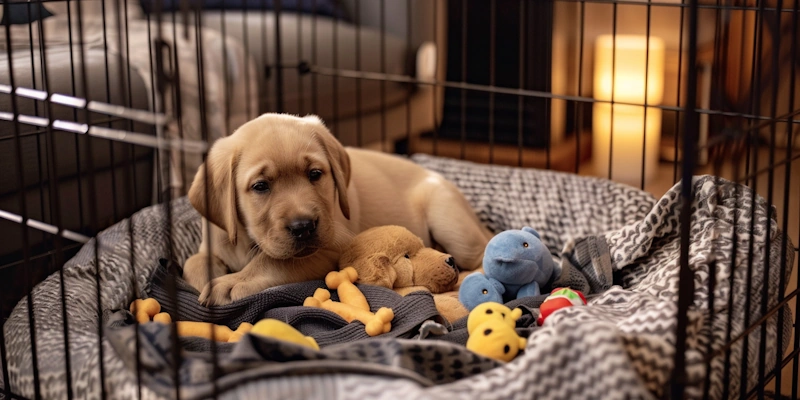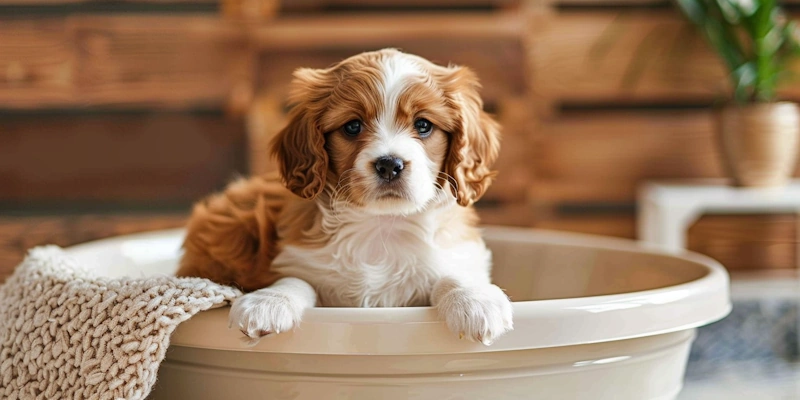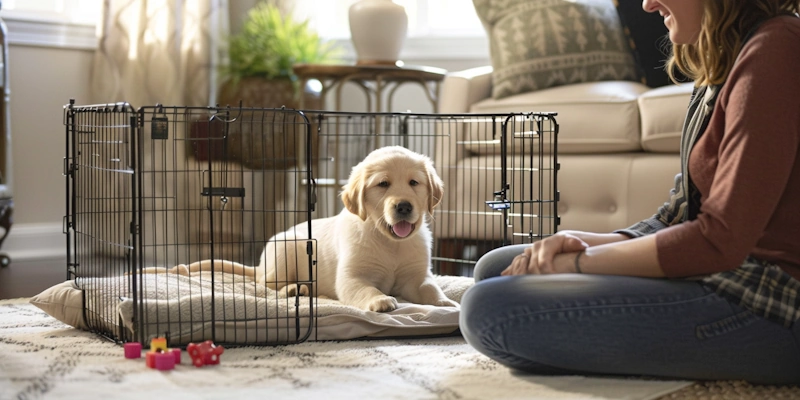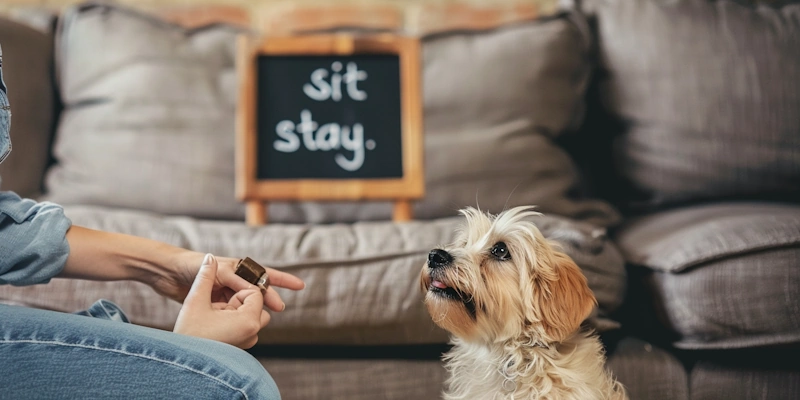Bringing a new puppy into your home is an exciting and joyful experience. However, it also comes with the responsibility of training your puppy to ensure they grow into a well-behaved and happy adult dog. Puppy training is essential for establishing good behavior, fostering a strong bond between you and your pet, and ensuring a harmonious household. In this blog post, we’ll cover the basics of puppy training, providing you with the foundational knowledge and tips to get started on the right paw.
The Importance of Early Training
Early training is crucial for puppies. The first few months of a puppy’s life are a critical period for learning and development. During this time, puppies are highly impressionable and can quickly absorb new information. Starting training early helps prevent the development of bad habits and establishes a solid foundation for future learning.
Setting Up for Success
Before you begin training, it’s important to create an environment that sets your puppy up for success. Here are some key steps:
1. Create a Safe Space:

Designate a specific area in your home for your puppy, such as a crate or a playpen. This space should be comfortable and free of hazards. It will serve as a safe haven where your puppy can rest and feel secure.
2. Puppy-Proof Your Home:

Remove any items that could be harmful or tempting for your puppy to chew on. Secure electrical cords, keep household cleaners out of reach, and ensure that small objects are not accessible.
3. Gather Supplies:
Have the necessary training supplies on hand, including a collar and leash, treats, toys, and a crate. Consistency is key in training, so having everything ready will help you establish a routine.
Housebreaking

Housebreaking, or potty training, is often the first priority for new puppy owners. Teaching your puppy where and when to relieve themselves requires patience and consistency. Here’s how to get started:
1. Establish a Routine:
Take your puppy outside frequently, especially after meals, playtime, and naps. Puppies have small bladders and need to go out often.
2. Choose a Designated Spot:
Select a specific spot in your yard where you want your puppy to go. The familiar scent will help them understand that this is the appropriate place.
3. Use a Cue Word:
Choose a word or phrase like “go potty” to associate with the act of relieving themselves. Use this cue consistently to help your puppy understand what you expect.
4. Reward and Praise:
Immediately reward your puppy with treats and praise when they go in the right spot. Positive reinforcement is crucial in teaching them that they’ve done the right thing.
5. Supervise and Confine:
When you can’t directly supervise your puppy, confine them to their safe space. Puppies are less likely to have accidents in their crate because they naturally avoid soiling their sleeping area.
6. Be Patient:
Accidents will happen, especially in the beginning. Clean up any messes promptly and avoid scolding your puppy. Instead, focus on reinforcing the positive behavior you want to see.
Crate Training

Crate training is an effective method for housebreaking and providing your puppy with a safe and secure space. Here’s how to introduce your puppy to their crate:
1. Make the Crate Inviting:
Place a soft bed or blanket inside the crate to make it comfortable. Leave the door open and allow your puppy to explore the crate at their own pace.
2. Use Positive Reinforcement:
Encourage your puppy to enter the crate by placing treats or toys inside. Praise and reward them when they go in voluntarily.
3. Gradual Introduction:
Start by closing the crate door for short periods while you’re nearby. Gradually increase the time your puppy spends in the crate, always ensuring they are calm and relaxed.
4. Create Positive Associations:
Feed your puppy their meals in the crate and provide special treats or toys that they only get when inside. This will help them associate the crate with positive experiences.
5. Never Use the Crate as Punishment:
The crate should be a positive and safe space, not a place for punishment. Using the crate as a time-out spot can create negative associations and increase anxiety.
Basic Commands

Teaching basic commands is an essential part of puppy training. These commands form the foundation for good behavior and communication. Start with these basic commands:
1. Sit:
Hold a treat close to your puppy’s nose, then slowly move it up, causing their head to follow the treat and their bottom to lower into a sitting position. As soon as they sit, say “sit” and give them the treat.
2. Stay:
Ask your puppy to sit, then hold your hand out in front of you like a stop sign and say “stay.” Take a few steps back, then return and reward your puppy if they stayed in place. Gradually increase the distance and duration.
3. Come:
Use a leash and gently pull your puppy toward you while saying “come.” When they reach you, reward them with treats and praise. Practice this command in different environments to reinforce the behavior.
4. Leave It:
Hold a treat in your closed hand and let your puppy sniff it. When they stop trying to get the treat, say “leave it” and reward them with a different treat. This command teaches impulse control and can prevent your puppy from picking up dangerous items.
5. Down:
Hold a treat in your hand and lower it to the ground. As your puppy follows the treat, their body should naturally lower into a lying down position. Say “down” and reward them once they are lying down.
Socialization

Socialization is a critical aspect of puppy training that involves exposing your puppy to a variety of people, animals, environments, and experiences. Proper socialization helps your puppy become well-adjusted and confident. Here are some tips:
1. Introduce Gradually:
Start with controlled, positive experiences. Allow your puppy to approach new people and animals at their own pace.
2. Positive Experiences:
Pair new experiences with treats and praise to create positive associations. This could include car rides, visits to the vet, or meeting new dogs.
3. Expose to Different Environments:
Take your puppy to different places, such as parks, pet-friendly stores, and busy streets. This exposure helps them adapt to various situations and reduces fear or anxiety.
4. Puppy Classes:
Enroll your puppy in a puppy socialization class where they can interact with other puppies and learn basic manners under the guidance of a professional trainer.
Consistency and Patience
Training a puppy requires consistency and patience. Dogs learn best through repetition and positive reinforcement. Here are some additional tips to keep in mind:
1. Keep Sessions Short:
Puppies have short attention spans, so keep training sessions brief and fun. Aim for 5-10 minutes, multiple times a day.
2. Use Positive Reinforcement:
Reward desired behaviors with treats, praise, and play. Avoid punishment, as it can create fear and hinder learning.
3. Be Patient:
Every puppy learns at their own pace. Celebrate small successes and be patient with setbacks. Consistency and positive reinforcement will yield results over time.
4. Involve the Whole Family:
Ensure that everyone in the household is on the same page with training techniques and commands. Consistency from all family members is crucial for effective training.
Conclusion
Puppy training is an essential part of raising a happy and well-behaved dog. By starting with the basics, such as housebreaking, crate training, basic commands, and socialization, you can set your puppy on the path to success. Remember that training takes time, patience, and consistency, but the rewards are well worth the effort. A well-trained puppy will grow into a confident and well-adjusted adult dog, making your life together more enjoyable and fulfilling. So, embrace the journey of puppy training and enjoy the process of watching your furry friend learn and thrive.